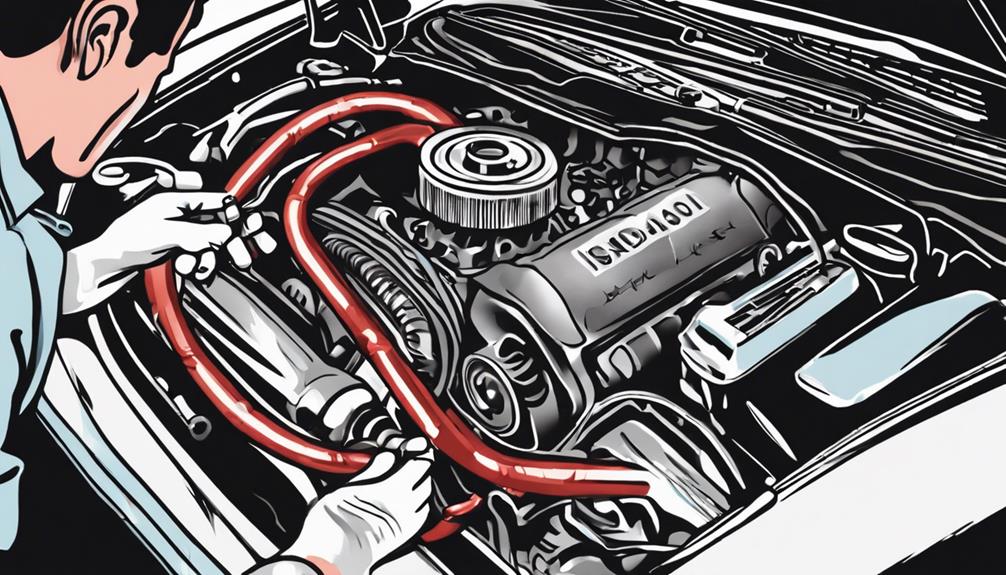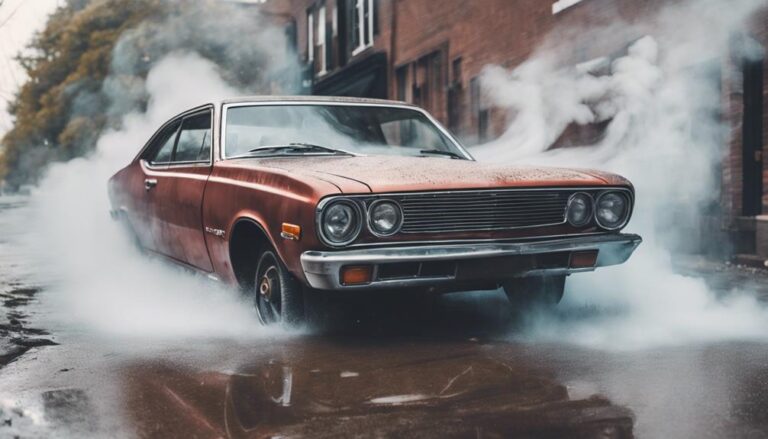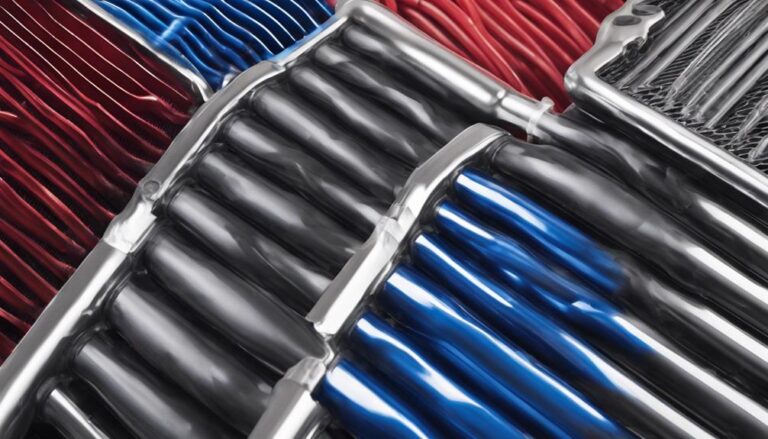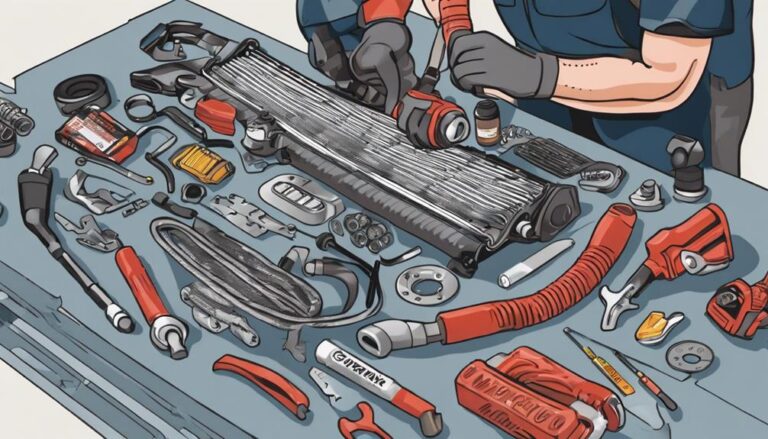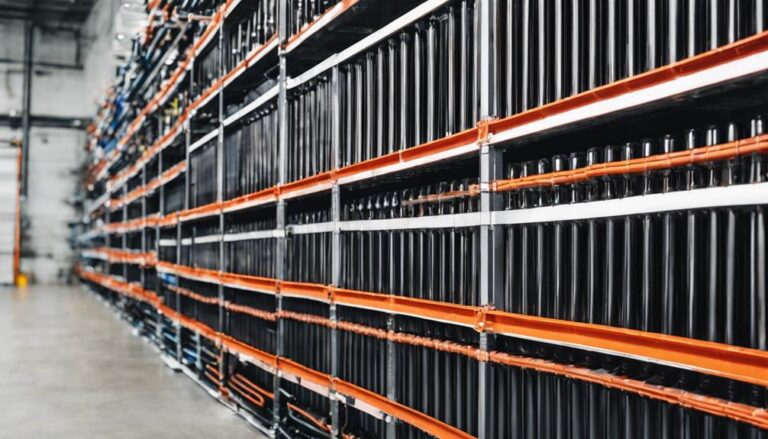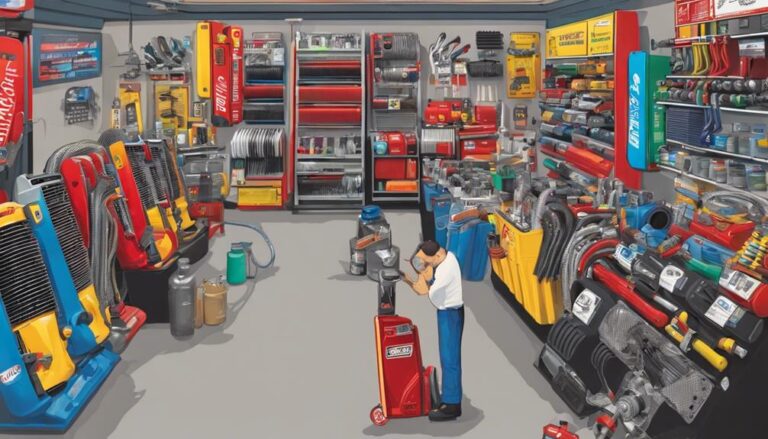Top Radiator and Hose Maintenance Tips for Cars
Did you know that small cracks in radiator hoses can lead to significant cooling system problems in your car? Ensuring the top radiator and hoses are well-maintained is important for preventing costly repairs and breakdowns.
By following a few simple maintenance tips, you can keep your vehicle's cooling system in top shape and avoid potential overheating issues. From inspecting hoses for wear and tear to monitoring coolant levels, there are key steps you can take to safeguard your car's radiator and hoses.
Stay tuned to discover essential maintenance practices that will help you keep your car running smoothly.
Key Takeaways
- Regularly inspect hoses for cracks, bulges, and flexibility
- Ensure clamps are tight to prevent coolant loss
- Monitor coolant levels and top up as needed
- Flush radiator annually to prevent buildup and inefficiencies
Visual Inspection for Hose Condition
When inspecting the condition of radiator hoses, carefully examine for cracks, fraying, or bulges to accurately assess their integrity. Radiator hoses are vital components of your vehicle's cooling system, responsible for carrying coolant to regulate the engine's temperature. Cracks and fraying in the hoses indicate rubber deterioration, while bulges suggest weakening of the hose structure.
If left unaddressed, these issues can lead to leaks and overheating, potentially causing significant damage to your engine. To prevent such problems, it's vital to conduct regular visual inspections of the radiator hoses. By detecting signs of wear early on, you can replace the hoses promptly and maintain the optimal functioning of your cooling system.
Squeezing Hose for Flexibility
Inspecting the radiator hoses by squeezing them for flexibility is a practical method to assess their condition and detect potential issues. A healthy radiator hose should feel firm when squeezed, indicating proper condition. Squeezing the hose helps identify any soft or overly hard spots that may signal issues.
Checking hose flexibility can reveal signs of deterioration or impending failure. Squeezing the hose regularly can prevent unexpected leaks or bursts while driving. Proper hose flexibility guarantees efficient coolant flow and prevents overheating.
Checking Clamps for Tightness

Guarantee that hose clamps are firmly tightened to maintain proper coolant flow and prevent potential leaks and overheating issues in the radiator system. Loose clamps can result in coolant loss and overheating problems, impacting the overall performance of your vehicle.
To avoid these issues, regularly inspect clamps for any signs of wear or corrosion that could compromise their effectiveness. Secure clamps play an important role in ensuring the integrity and efficiency of the radiator hoses.
By tightening clamps by hand, you can enhance the security of connections, reducing the risk of leaks and potential radiator damage. Properly secured clamps are essential components in maintaining the best functioning of your radiator system.
Monitoring Coolant Levels
To guarantee proper engine cooling and prevent overheating, regularly monitor the coolant levels in your car's radiator. Ensuring your vehicle maintains proper coolant levels is essential for preventing engine damage and maintaining peak radiator performance.
Here are some essential tips for monitoring coolant levels effectively:
- Regular Checks: Make it a habit to check your coolant levels frequently, especially before long drives or in extreme weather conditions.
- Use Coolant Tester: Consider using a coolant tester to accurately measure the concentration of coolant in your radiator.
- Top Up When Needed: If you notice that the coolant levels are low, top up with the manufacturer-recommended coolant mixture to the appropriate level.
- Follow Manufacturer's Guidelines: Adhere to the manufacturer's recommendations regarding coolant type and levels to prevent overheating issues.
- Consult a Professional: If you're unsure about monitoring coolant levels or notice any abnormalities, seek advice from a qualified mechanic to ensure your vehicle's health.
Regular Radiator Flushing
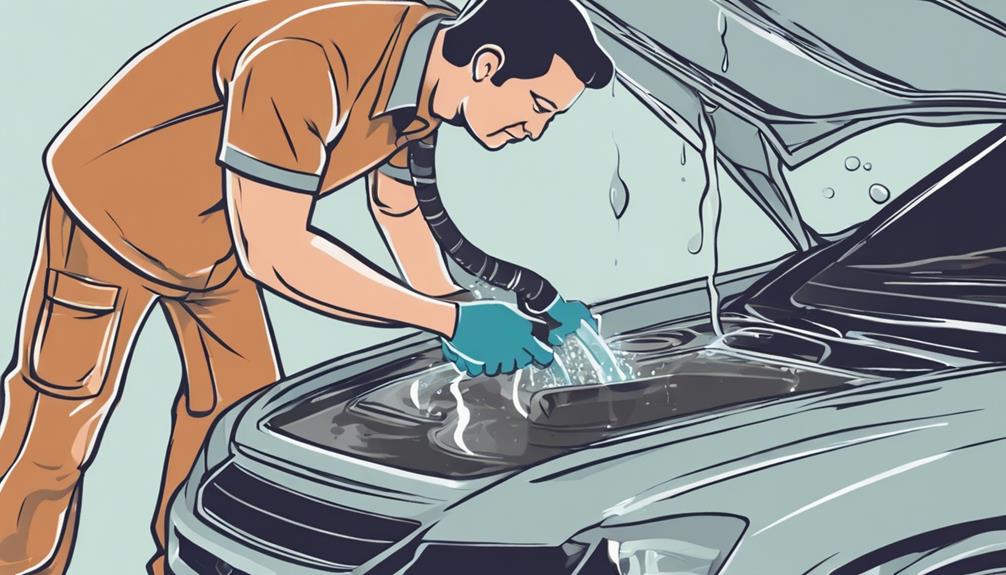
Regularly flushing your radiator every 12 months or 30,000 kilometers is essential for maintaining top performance and preventing issues such as rust and residue buildup. Flushing the radiator helps to keep your car's cooling system in best condition by preventing overheating, ensuring proper maintenance, and promoting efficient cooling performance.
By removing rust and residue buildup through a radiator flush, you can avoid coolant blockages that can lead to system inefficiencies. This practice is critical for the smooth operation of your vehicle's cooling system, as it removes contaminants that could hinder the radiator's ability to regulate temperature effectively.
Adhering to the recommended flushing intervals is key to extending the longevity of your radiator and preventing costly repairs down the line. Make radiator flushing a priority in your maintenance routine to enjoy a well-functioning cooling system and avoid potential overheating issues that may arise from neglecting this important task.
Frequently Asked Questions
How Do You Maintain Radiator Hoses?
To maintain radiator hoses, regularly inspect for cracks, bulges, and leaks. Keep coolant levels at their best and replace hoses every 10 years or 100,000 miles. Check clamps, monitor hose firmness, and make sure proper flushing and protection for long-lasting, flexible hoses.
How Do You Maintain the Radiator of Your Vehicle?
To maintain your vehicle's radiator, check coolant levels, inspect for leaks, clean the surface, replace the cap, flush the system, and guarantee proper pressure. Regularly monitor the radiator fan, thermostat, and antifreeze mixture to prevent overheating and corrosion.
What Maintenance Do Radiators Need?
To maintain radiators, make sure proper antifreeze levels, perform regular coolant flushes, inspect for leaks, prevent overheating, protect against corrosion, regulate temperature, conduct frequent checks, repair as needed, and optimize cooling efficiency. Prioritize radiator health for best vehicle performance.
How Can I Make My Radiator Hoses Last Longer?
To make your radiator hoses last longer, guarantee regular cooling system checks, prevent leaks with proper installation, regulate temperature by inspecting hoses, avoid overheating, choose durable hose material, and prevent corrosion for longevity.
Conclusion
To sum up, maintaining your top radiator and hoses is like giving your car a revitalizing drink of water on a hot day. By regularly inspecting hoses, checking clamps, and monitoring coolant levels, you can guarantee your vehicle stays cool and efficient.
Remember, a well-maintained cooling system is the key to a smooth ride and long-lasting engine performance. Don't overlook these simple maintenance tasks to keep your car running smoothly for miles to come.

